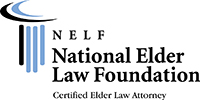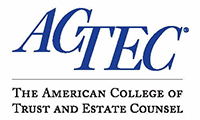In my last articles, I have been discussing several gifting techniques to use to reduce the size of your estate for federal estate tax purposes. This month's article will continue with this theme with a discussion on the use of an Irrevocable Life Insurance Trust.
Although the receipt of life insurance proceeds is generally income tax free, the life insurance proceeds will be considered an asset of the decedent, and included in the estate of the insured if the insured owned or had any incidents of ownership in the policy. Incidents of ownership of the life insurance policy include the right to change the beneficiary of the policy, the right to borrow against the cash value of the policy, the right to assign ownership or the cash value of the policy.
Since life insurance can be one of the biggest assets of your estate, large estate tax savings will be achieved if the life insurance proceeds can be excluded from the insured's estate. Although there are other methods to remove the life insurance from your estate for federal estate tax purposes, one of the best methods is through the use of an Irrevocable Life Insurance Trust (ILIT).
An ILIT removes the life insurance from the insured's estate by having the insured assign all incidents of ownership to the trustee of the ILIT. Since the insured does not possess any incidents of ownership in the policy at the time of death, none of the insurance proceeds will be included in the insured estate for federal estate tax purposes.
Requirements
To remove the life insurance proceeds from the insured's estate through the use of an ILIT, many requirements must be satisfied. The following are some the most important requirements:
- Irrevocable. The trust must be irrevocable which means the trust cannot be revoked or modified after it is signed. Under no circumstances can the creator of the trust serve as trustee of the ILIT. Although it is generally not recommended, a family member can serve as trustee.
- Assignment of an existing policy. If the trust receives a previously issued insurance policy, the owner of the policy must live three years after the transfer of the policy for the policy proceeds to be excluded from the insured's estate. (Don't ask why, it is just the rule.). If the trustee of the ILIT purchases a new life insurance policy, the policy proceeds will not be taxed at the insured's death regardless of how long the insured survives after the creation of the trust.
- Ownership counts. The trustee of the ILIT must be the actual owner of the policy as shown on the insurance contract. It is not enough to simply designate the trust as the beneficiary of the insurance policy. In addition, the trustee should be in actual possession of the insurance policies, and make all premium payments on the policies, which are funded by gifts from the creator of the trust. The trustee should establish a separate bank account in which to deposit the gifts from the insured and write the checks to the insurance companies for premium payments.
- Payment of Premiums. Both the original contribution to the trust (either the cash value of the previously issued policy or the cash to purchase the new policy) and subsequent premium payments are gifts to the trust. The trustee of the ILIT must provide notice to the trust beneficiaries that they have the right to withdraw payments to the trust ("withdraw powers") for a limited period (at least 30 days) immediately after the transfer to the trust. These withdrawal powers are necessary to qualify any transfers to the trust for the $11,000 annual exclusion from gift tax.
- Notice of Withdraw Rights. The beneficiaries must have actual notice of their withdrawal powers and must be given a reasonable time to exercise their power of withdrawal before it expires. Therefore, the trustee must send a written letter to each beneficiary, which describes his or her withdrawal right each time a transfer is made to the trust. If a beneficiary is a minor child, the trust must allow the child's legal guardian to exercise the withdrawal power on behalf of the minor child.
- What happens if the beneficiary exercises their withdrawal rights? It rarely if ever happens. The person that creates the trust lets the beneficiary know (but not in writing) that if they exercise their withdrawal rights no more money will paid into the trust and that large insurance policy that they planed to receive will be gone. In addition, you may decide to write them out of your will. Generally, these are enough of an incentive to prevent a beneficiary from exercising their withdrawal rights.
- Lapse of withdrawal Rights. There can be tax consequences to the beneficiaries of the trust if large transfers are made to the trust. If large transfers will be made to the trust to pay premiums, additional language must be included in the trust to avoid any adverse tax consequences to the beneficiaries.
- Tax Clauses. While it is common to use an ILIT to provide liquidity to an estate, the terms of the ILIT cannot require that the trustee of the ILIT use the insurance proceeds to pay any federal estate due by the insured's estate. If the trustee of the ILIT is required to pay any federal estate tax of the insured's estate, the entire value of the ILIT will be included in the insured's estate.
types of insurance trusts
Generally, there are two types of insurance trusts, single trusts, which hold a policy or policies on the life of one individual, and joint trusts, which holds joint and survivor policies on a husband and wife.
Single trusts
Single trusts are established by a single grantor who contributes insurance policies or cash to the trust during his or her lifetime. Single trusts generally provide that on the death of the insured the policy proceeds will remain in trust for the surviving spouse, for the surviving spouse's lifetime, and upon the death of the surviving spouse, the proceeds will pass to the children. If drafted correctly, all the insurance proceeds plus any growth will not be included in surviving spouse's estate at the time of his or her death. All the proceeds will pass the children federal estate tax-free.
joint trusts
A joint trust is established by a husband and wife to hold a joint and survivor life insurance policy. Since joint and survivor policies only pay upon the death of the second spouse, the insurance proceeds will be distributed to the children or grandchildren federal estate tax free.
Conclusion
If done correctly and in the right situation, the use of an ILIT is an excellent means to reduce your federal estate tax liability. However, there are many traps for the inexperienced and unwary in the use of an ILIT. Therefore, always consult and experience attorney in this area before proceeding.
Call (720) 200-4025 now or email us to find out how our attorneys can advise you on Irrevocable Life Insurance Trusts.











